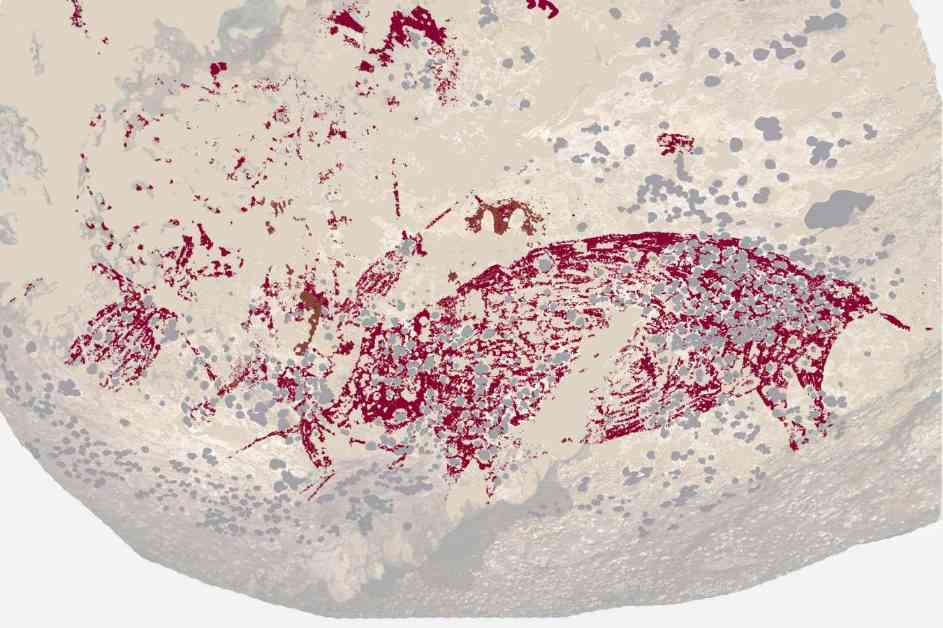The discovery of a 50,000-year-old cave painting in Indonesia has shed light on the earliest known example of representational art in the world. The painting, found in Leang Karampuang on the island of Sulawesi, depicts a pig along with human-like figures and dates back over 51,000 years.
Researchers from Griffith University in Australia, led by Maxime Aubert, have used advanced dating techniques to determine the age of the artwork. They also studied another cave nearby, Leang Bulu’ Sipong 4, where a hunting scene was dated to at least 43,900 years old.
The new dating method involves extracting a core from the rock and testing minuscule amounts of material to measure isotopes’ decay, resulting in minimal damage to the artwork. This technique has provided more accurate dates for the Sulawesi art, challenging previous assumptions about the timeline of early human artistic practices.
According to Aubert, these findings suggest that modern humans were creating complex narratives through art over 50,000 years ago. The paintings in the caves not only depict hunting scenes but also reveal spiritual beliefs through the portrayal of creatures with human and animal attributes.
Renaud Joannes-Boyau, a member of the research team, emphasizes that these ancient artworks are more than just symbols – they represent a storytelling tradition that reflects early humans’ attempts to understand and make sense of the world around them.
The significance of this discovery extends beyond the age of the artwork. Kira Westaway from Macquarie University highlights the implications for our understanding of the early artists’ skills and toolkits as they migrated through Indonesia and eventually reached Australia.
While Homo sapiens are credited with creating these intricate artworks, Martin Porr from the University of Western Australia suggests that other hominins, such as Neanderthals, may have also possessed symbolic capabilities based on their sophisticated material culture.
Looking ahead, Porr emphasizes the importance of further archaeological research in the region to unravel the social, economic, and cultural contexts of these ancient images during the late Pleistocene period. The use of innovative dating techniques opens up new possibilities for exploring and reevaluating rock art history worldwide.
The discovery of the 50,000-year-old pig painting in Indonesia not only redefines the timeline of human artistic expression but also offers a glimpse into the rich storytelling tradition of our ancient ancestors. As researchers continue to unravel the mysteries of these prehistoric artworks, the narrative of human evolution and creativity takes on new dimensions.






